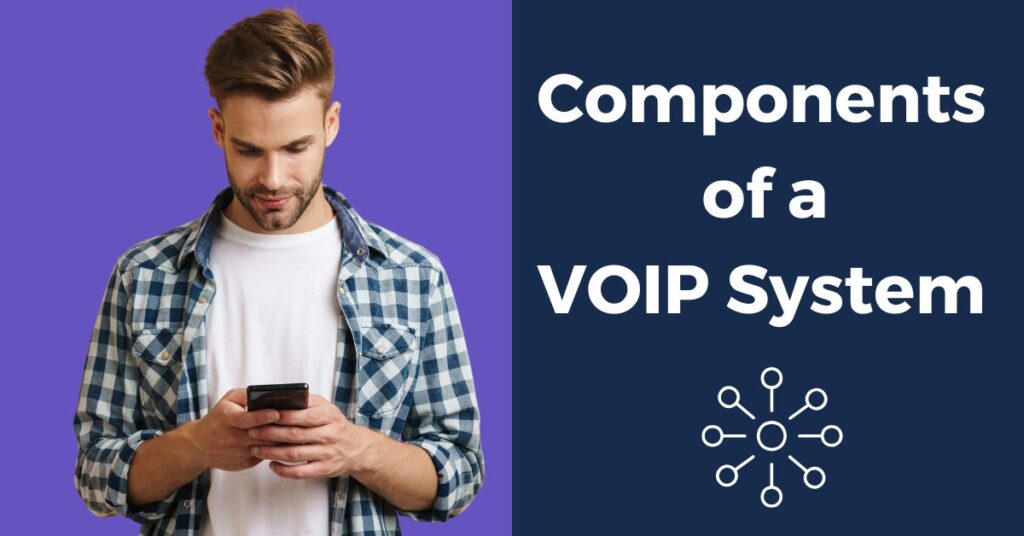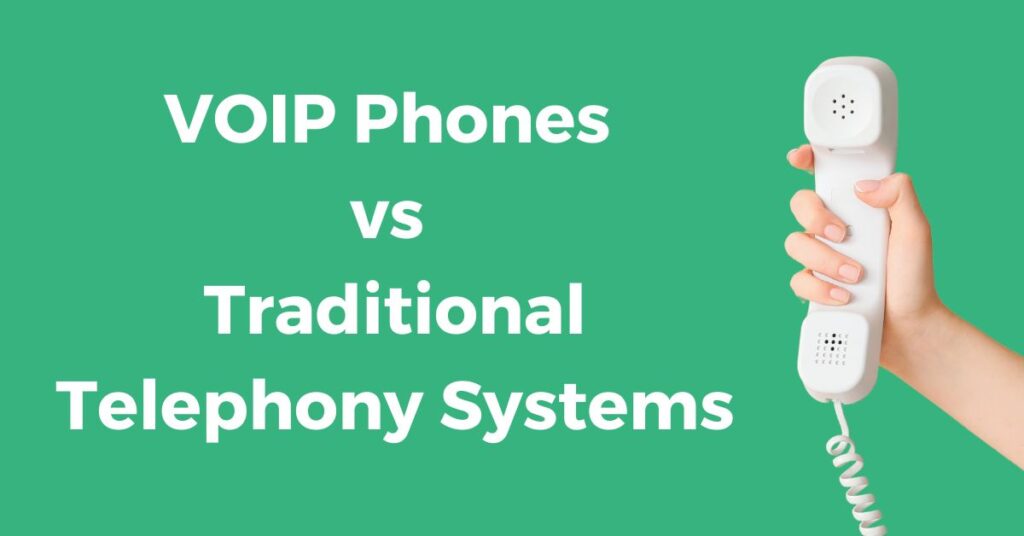How does VoIP work? The Ultimate Guide

A relatively recent technology that allows phone calls to be made and received via the internet, VoIP (Voice over Internet Protocol) transforms how businesses communicate and their contact centres operate.
Even if you’re familiar with the term ‘VoIP,’ you may want to know more about how VoIP technology works, the differences between VoIP software and a traditional landline telephone, and why a business might choose a VoIP phone system for its contact centre.
A VoIP service is a foundational component of modern communications as more channels move away from public telephony toward digital infrastructure in Australia and globally.
To learn more about this communication option, keep reading our comprehensive guide to VoIP phone technology.

What is VoIP?
Standing for Voice over Internet Protocol, is a digital telephone system that enables users to make and receive phone calls over the internet, rather than a traditional analogue phone or landline phone service or through the telephone network.
VoIP technology enables voice communication, video calls, and multimedia sessions over the internet, instead of using traditional Public Switched Telephone Networks (PSTN). It converts voice signals into digital data packets and transmits them over the internet.
VoIP is highly flexible and can be accessed through a variety of devices, including computers, smartphones, tablets, and specialised VoIP phones. The system supports both incoming and outgoing calls, allowing users to maintain regular telephone communication. Additionally, many VoIP services offer enhanced features such as voicemail, call forwarding, video conferencing, and text messaging, which are typically not available with traditional landline services.
Over time, VoIP has also earned several alternative names, including IP telephony, internet telephony, broadband telephony, VoIP phones, and cloud-based phone systems. These terms all refer to the same underlying technology but may be used in different contexts or to describe specific features or deployment models. For instance, “cloud-based phone system” refers to VoIP services hosted on remote servers and managed through the cloud, allowing businesses and individuals to access their communication tools from anywhere with an internet connection.

Key Components of a VoIP System
End user Devices:
iP Phones: Hardware phones designed to work with modern VoIP systems.
Softphones: Software applications that simulate a phone on a computer or smartphone such as Bria or Microsoft Teams Phone System.
Mobile Devices: Smartphones or tablets with VoIP apps (e.g., Skype, WhatsApp, or Zoom) can also be used to make calls.
VoIP Server:
Manages call routing, authentication, and services like voicemail.
VoIP enables traditional telephony services to operate over computer networks using packet-switched protocols. Packet-switched VoIP configures voice signals into packets, similar to an electronic envelope. VoIP packets can then be transmitted over any VoIP-compatible network, such as a local area network (LAN) rather than through an analogue voice signals.
Codecs:
Algorithms that encode and compress voice signals, ensuring end-to-end encryption and security for calls
Gateways:
Devices that convert and connect VoIP networks with traditional PSTN networks, enabling communication between digital and analogue systems
Session Protocols:
Protocols like SIP or H.323 handle signalling, session setup, and teardown
Internet:
Provides the network required for transmitting data packets.
Routers and Switches:
Ensure efficient routing of VoIP traffic across the network when an organisation is able to make or receive calls

How does a VoIP system work?
A VoIP system converts voice audio into digital data. These signals are then placed into voice data packets by the VoIP phone system software and delivered to the recipient via the IP network (a local area network or a wide area network).
VoIP calls can be made using a variety of internet-enabled devices, including:
VoIP phones
Smartphones
Laptops and desktop computers
Cloud-based phone systems
With just a broadband internet connection, VoIP services allow seamless communication, whether for voice calls, video or instant messaging.

How VoIP Phones Differs from Traditional Telephony Systems
Transmission Method:
VoIP: A VoIP phone uses the internet to send voice data as digital voice packets
Traditional Telephony: Relies on circuit-switched networks (PSTN) to establish and maintain a dedicated connection for the call duration
Cost:
VoIP: VOIP is generally more cost-effective, especially for long-distance and international calls compared to landline phone calls
Traditional Telephony: Can incur higher costs due to infrastructure and call distance and the costs of an analogue phone or an analogue telephone adapter
Flexibility:
VoIP: Offers advanced features such as video calling, call recording, and integration with other software applications
Traditional Telephony: Primarily supports basic voice communication
Infrastructure:
VoIP: Requires an internet connection, IP-based hardware/software, and often cloud services and is dependent on reliable network and internet infrastructure
Traditional Telephony: Requires physical landlines, telephone exchanges, and extensive infrastructure

What are the Advantages of VoIP?
Business phones are no longer limited to physical lines, and VoIP services now enable communication across multiple channels beyond just voice calls. Significant benefits are also gained by adopting VoIP communications including:
Cost efficiency compared to traditional phone systems: VoIP phones can provide significant cost savings compared with traditional landline telephones. A VoIP phone system can be deployed to any premise with a broadband internet connection as it makes voice calls through VOIP Apps or an internet phone.
VOIP solutions also provide more affordable hardware and infrastructure.
Greater flexibility and scalability of services: VoIP solutions let you leverage your traditional phone system and hardware by offering easy integration with private branch exchange (PBX) systems and cloud telephony technology such as soft phones.
Greater accessibility: VoIP provides greater freedom by no longer geographically restricting you to locations with a phone signal. Additionally, there is no need to install copper wiring or expand a landline set-up. You simply need an internet connection to make unlimited calls within a communication application.
Enhanced features that are not available with conventional telephones: When looking for a business phone system, unified communications (UC) software may be the best solution compared to traditional phones. UC can provide flexibility, with options for instant messaging through chat or a mobile device, video calls, and video conferencing. It can be configured by a service provider to make calls to the public switched telephone network for calls to landline phones and other telephone services such as direct routing for Microsoft Teams. Unified Communication applications such as Microsoft Teams also provide options to access communications services through a computer or mobile devices which provides more flexibility than traditional phone systems.
When it comes to customer service and contact centre technology, there are also CCaaS solutions based on VOIP rather than traditional phone lines. IPscape’s Cloud Contact Centre Solution leverages ip telephony technology (for call centres) and other digital channels to create omnichannel experiences. IPscape enables voice connectivity using existing desk phones, mobile phones or through ‘Web Connect’ a voip call initiated through the internet browser. IPscape is a solution that enables contact centre employees to work from anywhere there is an internet connection. In an emergency, IPscape workflows and call routing can even be updated using a mobile phone.
IPscape enables contact centre agents to make international calls, calls to mobiles and also provide digital channels such as WhatsApp, Email and Web Chat. This enhanced functionality can be deployed and implemented by a leading communication service provider or contact IPscape directly.
Advanced Features of VoIP
More advanced features of a VoIP solution include:
AI Integration: Chatbots, call analytics, or sentiment analysis.
CRM Integrations: Real-time syncing of call data with tools like Salesforce, Microsoft Dynamics, Zendesk, or ServiceNow
Call Monitoring and Coaching: Features for supervisors in business settings.
Improved voice and call quality: VoIP systems can offer superior voice clarity compared to traditional telephony, provided the right network infrastructure is in place. It is however important to ensure that you have reliable internet and network infrastructure. This ensures voice quality is not compromised when using a VoIP solution. Other requirements to consider include ensuring your operations maintains the latest version of the browsers for security and performance, and you conduct regular speed tests for your office (usually minimum of 100kbps per connected workstation – a ‘Speed test’ can be conducted here: https://www.speedtest.net/).

Setting up VoIP for your organisation in Australia
Getting started with a VoIP phone system
To set up a VoIP phone service, contact a provider offering cloud-based solutions and the necessary hardware (e.g., computer or mobile device, desk phone). Many VoIP providers and service providers help organisations with the migration from a traditional phone system to adopt ip Telephony solutions. There are also VoIP solutions aimed for different use cases within an organisation. This includes Unified communications (UC or UCaaS) which is for team collaboration and communications, and Cloud Contact Centre solutions which is used to manage multichannel communications with customers. Some channels include inbound and outbound voice, web chat, shared email inboxes, SMS and social media such as WhatsApp.
UC platforms incorporating VoIP services offer enhanced collaboration tools such as video conferencing, instant messaging, and CRM integrations, streamlining operations across departments.
Contact Centre VoIP phone system features include wrap codes, call outcomes, reporting, call recording, intelligent routing and more. IPscape’s software leverages VoIP technology for contact centres and is a true cloud solution where users only need a browser and an internet connection. IPscape is telephony agnostic, enabling you to make and receive voice calls anywhere through the telephony option of your choice including softphones, Microsoft Teams, PABX, mobile phone or Web Connect (VoIP).

Selecting the Right VoIP Service Provider in Australia
1) Establish which areas of your organisation need communication technology
2) Identify if you need a UC or CCaaS solution for your business phones based on the feature sets required, you can contact a VOIP provider or providers for an understanding of the solutions offered
3) When selecting the right VoIP service provider, it’s important to consider factors that align with your business needs. Key considerations include:
Feature set – such as routing options to make or receive VoIP calls, ability to make phone calls to landlines or the mobile network.
Support and reliability – does your VOIP provider offer comprehensive training and support? Are there local contacts in Australia?
Scalability – do they provide enterprise-grade voice quality? Does the solution scale to meet peaks or seasonality changes? Is it a cloud solution that can be deployed globally?
Pricing and Call Plans:
Choosing a VoIP service provider over a traditional phone system can deliver significant cost savings. However, it’s essential to carefully select the plan that best suits your needs. Compare pricing for local, mobile, and international calls to ensure you’re getting the most competitive rates. Additionally, be aware that not all VoIP service providers offer the same level of call quality. Since clear, reliable communication reflects directly on your brand, prioritise providers that deliver the high-quality service you need to maintain a professional image. Choose wisely to balance both cost and performance.
Reviews and Reputation:
Research reviews and case studies about Australian providers and understand the quality of their VoIP phone services.

Regulations for VoIP in Australia
According to Australian law, VOIP services are classified as carriage services and are covered under the Telecommunications Act 1997(Cth).
The Australian Government under the Australian Law Reform Commission defines Voice over Internet protocol (VoIP), technology that enables spoken conversations to be conducted in real time over the internet which is a subset of IP Telephony. Section 9.80 further highlights that VoIP services transmit sound waves of speech via the internet in the form of VoIP and data packets.
Considerations of VoIP regulations in Australia also span through ACMA under the Universal service obligation which stipulates the performance targets for services that include landlines ip telephony, and network reliability for communications. The Australian Universal Service Obligation (USO) protects customer’s access to voice services, which are deemed important for the community. The main service provider for the USO in Australia is Telstra who ensure communications such as standard telephone services (STS) and payphones are “reasonably accessible to all people in Australian on an equitable basis”.

How does the future of VoIP look in terms of technological advancements and regulations in Australia?
Advancements predicted for VoIP technology
1. Integration with AI and Automation
AI-Powered Features: It is expected that there will be more sophisticated features such as voice recognition, real-time transcription, call summarisation, language translation, and intelligent call routing powered by AI.
Chatbots and Virtual Assistants: Furthermore, AI is enabling more self-service customer journeys. AI Neural Voices are of a high quality and human-like that they are almost indistinguishable.
2. Improved Internet speed and reliability
NBN, fibre to the premises (FTTP) broadband and the widespread adoption of 5G will significantly improve VoIP quality by reducing latency and enhancing bandwidth, making it possible to support high-definition voice and video calls seamlessly. The Australian Competition and Consumer Commission (ACCC) recently published a report on the most reliable internet connect types in Australia. It found that Australians that have a fibre to the premises broadband internet connection experience less outages than other connection types.
3. Enhanced Security
End-to-End Encryption: Rising concerns about cybersecurity will drive the adoption of more robust encryption protocols. WebRTC voice calls are able to be encrypted end-to-end providing more security.
Fraud Prevention: Machine learning tools will help detect and mitigate VoIP fraud and spam calls.
4. Unified Communications
VoIP systems will increasingly integrate with other business communication tools like conferencing, messaging, and file sharing, streamlining workflows in hybrid and remote work setups. Collaboration between the contact centre and the back office will increasingly become more important, so enabling seamless communication will be foundational to creating optimal customer experiences.
5. Cloud-Based Solutions
The shift towards cloud-based VoIP platforms will continue to grow, driven by their scalability, flexibility, and cost efficiency, particularly for SMEs.
6. IoT Integration
As IoT devices proliferate, VoIP will become embedded in a broader array of connected devices, enabling voice communication across diverse platforms. IPscape has enabled companies to embrace this trend, bringing the power of ip phone service technology to hotel intercoms and car park bollards.
If I have VoIP service, who can I call?
One of the key advantages of Voice over Internet Protocol a (VoIP) service is their versatility in enabling communication with a wide range of people, whether they are using the same VoIP system or not. While some VoIP providers limit calls to other users on their network, most modern services, like Skype, WhatsApp, and Microsoft Teams Direct Routing, offer cross-platform calling that allows you to connect with anyone. This is provided that they have a phone number or an internet connection.
If you’re using a standard VoIP system, you can call anyone with a regular landline or mobile phone, regardless of whether they are using the same provider.
Additionally, VoIP services allow for flexibility in the length and number of conversations. Since many VoIP providers offer unlimited calls within certain regions or across countries for a fixed fee, you can engage in extended conversations without worrying about racking up high costs, as you might with traditional phone services. This makes VoIP an excellent solution for personal communication, business calls, and international connections.
So whether you’re calling a friend down the street, a colleague across the country, or a family member overseas, VoIP gives you the freedom to connect without boundaries, all while keeping costs manageable.
VoIP Cloud Contact centre phone systems
Since 2005, IPscape has been helping organisations around the world leverage the benefits of VoIP systems.
SCAPE is a VoIP cloud communication technology solution that is feature-rich, scalable, and has advanced integration capabilities. We help businesses connect with their customers through multi-channel communications, including Voice, Web Chat, Email, and SMS.
VoIP FAQ: Common Questions Answered
1. What is VoIP?
VoIP stands for Voice over Internet Protocol. It is a technology that allows you to make voice calls over the internet rather than through traditional telephone lines. Instead of sending your voice through physical copper wires, VoIP converts your voice into digital data packets, which are transmitted over the internet and then reassembled into sound at the other end. This can result in cheaper, more flexible calling options for both personal and business use. Popular VoIP services include Skype, Zoom, WhatsApp, and Google Voice.
2. Are VoIP calls free?
R calls can be free or low-cost, depending on who you’re calling and which service you’re using:
Free Calls: Many VoIP services, like Skype-to-Skype, WhatsApp-to-WhatsApp, or Google Voice-to-Google Voice, allow you to make free calls, as long as both parties are using the same platform and connected to the internet.
Low-Cost Calls: When you call traditional landlines or mobile phone numbers (especially internationally), most VoIP providers charge a fee. However, these rates are typically much lower than traditional phone services, especially for long-distance or international calls. Some providers also offer flat-rate plans for unlimited calls.
3. Is VoIP like a landline?
While VoIP and landlines both serve as ways to make voice calls, there are some key differences:
Technology: A landline uses physical copper wires to transmit voice signals, while VoIP uses the internet to send voice data in digital packets.
Flexibility: Calls can be made from various devices, such as smartphones, computers, or specialised VoIP phones, and don’t rely on a fixed location. On the other hand, a landline requires a physical connection to the phone network and is typically tied to a single location.
Cost: VoIP generally offers more affordable rates, particularly for long-distance and international calls, compared to traditional landline services.
4. What is the difference between VoIP and Wi-Fi calling?
While both VoIP and Wi-Fi calling rely on internet connections to make calls, they are not the same:
VoIP: VoIP refers to any system that allows calls to be made over the internet, typically through a service like Skype, Zoom, or Google Voice. VoIP works independently of your cellular network and usually requires an internet connection (Wi-Fi or mobile data) to function.
Wi-Fi Calling: Wi-Fi calling is a feature offered by many mobile phone carriers that allows you to make calls using a Wi-Fi network instead of relying on your cellular network. This is particularly useful when you’re in an area with poor cell service but a strong Wi-Fi connection. While Wi-Fi calling uses the internet, it’s different from VoIP in that it uses your cellular number and is managed by your carrier, rather than a third-party service.
In short, VoIP is a broader term for internet-based calling services, while Wi-Fi calling is a specific feature that lets you make calls using Wi-Fi instead of mobile data or a cellular network.